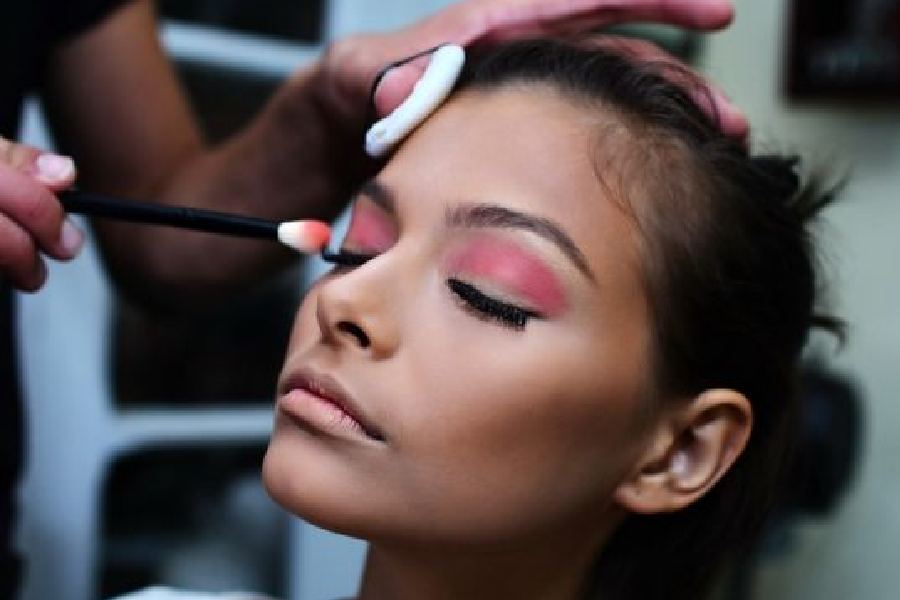A skincare lotion with a deeper reach, blue eye shadow with glitter for that seductive evening look, the trendy lipstick suggesting mystery, the perfume that prods the memory and envelops the senses, the faint blush, the gleaming cheekbone — the world overflows with aids to beauty. It is a beauty explosion. But make-up is an old, old art that has been transforming itself through the ages, yet it has always lingered on the same features, lovingly recreating a skin-colour there or a cupid’s bow elsewhere. Recent archaeological excavations in Aizanoi in western Turkey have revealed what a cosmetics and jewellery shop sold to Roman women 2,000 years ago. They liked eye shadows and blushes, still well-preserved in oyster shells, and they had tastes
very similar to women now. The reds and pinks the archaeologists discovered have their counterparts today. The eye shadows do not lack in variety either: at least 10 shades have been found. Beads from necklaces and hairpins and bottles that once held
perfumes have been recovered — make-up was, and is, far from a frivolous art.
Ancient Greek and Roman women could have also shared with Indian women their preference for light complexions. Not Aizanoi, but old treatises elsewhere describe their use of white lead as foundation, even though they were aware of its poisonous properties. Women of leisure could not afford to have blemishes. Sound familiar? But many male writers of the time disapproved of make-up as a trick to deceive their innocent hearts. Eye make-up — kohl was used, or sometimes lampblack, as in kajal — was associated with sexual manipulation; the trick was to have the ‘no make-up made-up’ look. Still fashionable, even ‘nude’ lips. Ovid, though, that brilliant black sheep among his peers, knew all about metamorphosis. Only he understood that a woman needed to feel beautiful, she needed to craft her own identity within the severe limitations of her role as wife and homemaker. But ancient Egypt had fewer inhibitions. A dead person would not be allowed to speak in the afterlife unless they were dressed in clean white linen, had eyeliner on and were anointed with the finest myrrh oil. With such standards, the living were, expectedly, more vibrant. Women exfoliated, depilated and hydrated their skin, smelt marvellous — a 1552 BCE papyrus mentions an outstanding perfume — and both men and women used kohl eyeliners from 4000 BCE to protect their eyes from the desert glare and look ravishing too.
For ancient Indians, dressing up — or down — was a celebrated art, and not just for the women either. From sandalwood designs on the face and body to henna decorations of the hand, oils and perfumes, jewels and hairdos, kajal-lined eyes and betel-stained lips — Cleopatra used crushed beetles — and intricately woven flowers for the hair, arms, waist and ankles, ancient Indians knew a thing or two about make-up, its sensuous joys and secret codes. The ladies of Aizanoi would have enjoyed their company.











